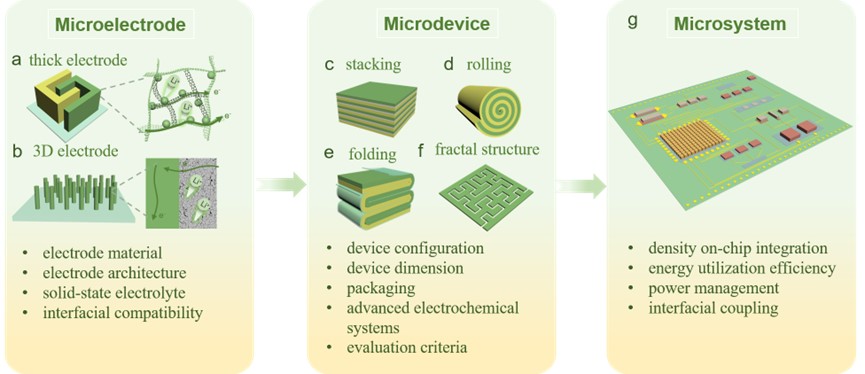S. Wang, P. Das and Z.-S. Wu*
Science Bulletin, 2024.
DOI: 10.1016/j.scib.2024.01.012 [PDF]

Over the past few years, miniaturized electronic devices have made it abundantly clear that the IoT is no longer a distant dream. The only factor currently missing and hindering it from reaching its full potential is an independent on-board micropower source. A pertinent bottleneck is the trade-off between areal energy density and dimensions of MESDs, that need to be improved simultaneously to satisfy the strict standards for specific applications. Above, we have provided insights into the directions for future development of this field by synergizing high-performance electrode materials, introduction of state-of-the-art solid electrolytes, advanced microelectrode design and device configurations, minimization of the inactive packaging, application of advanced high-energy-density electrochemical systems, and establishment of standardized performance evaluation criteria. Once an optimal point is reached in these regards, the subsequent formidable goal will be the industrial upscale of next generation MESDs. With the concerted efforts of scientists, engineers, and entrepreneurs, we will succeed in taking these exceptional properties from laboratory to industry. MESDs have great potential to revolutionize the way microelectronic devices are powered and hold the key to unfettering them from wires. Removing these shackles will undoubtedly usher in unthinkable applications and might as well mark the next step of human evolution.
